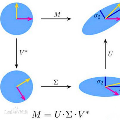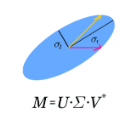We show that the spectral theorem -- which we understand to be a statement that every self-adjoint matrix admits a certain type of canonical form under unitary similarity -- admits analogues over other $*$-algebras distinct from the complex numbers. If these $*$-algebras contain nilpotents, then it is shown that there is a consistent way in which many classic matrix decompositions -- such as the Singular Value Decomposition, the Takagi decomposition, the skew-Takagi decomposition, and the Jordan decomposition, among others -- are immediate consequences of these. If producing the relevant canonical form of a self-adjoint matrix were a subroutine in some programming language, then the corresponding classic matrix decomposition would be a 1-line invocation with no additional steps. We also suggest that by employing operator overloading in a programming language, a numerical algorithm for computing a unitary diagonalisation of a complex self-adjoint matrix would generalise immediately to solving problems like SVD or Takagi. While algebras without nilpotents (like the quaternions) allow for similar unifying behaviour, the classic matrix decompositions which they unify are never obtained as easily. In the process of doing this, we develop some spectral theory over Clifford algebras of the form $\cl_{p,q,0}(\mathbb R)$ and $\cl_{p,q,1}(\mathbb R)$ where the former is admittedly quite easy. We end with a conjecture about spectral theorems.
翻译:我们可以看到,光谱定理 -- -- 我们的理解是,光谱定理是每个自联矩阵都承认在单一相似状态下某种类型的卡通形式 -- -- 允许以不同于复杂数字的其他 $ * $ = 升代数为类比。如果这些 $ * $ 升代数包含无能力,那么我们可以看到,有许多典型的矩阵分解 -- -- 例如Singulal 值分解、Takaggi分解、Skew-Takagi 分解和约旦分解等 -- -- 这些都是直接的后果。如果以某些编程语言生成自联矩阵的相关卡通形式为子例,那么相应的典型矩阵分解将是一线,没有其他步骤。我们还建议,通过使用操作器超载一种编程语言,一种计算复杂自联解析矩阵的数值算法(Takakagi ) 和约旦分解等问题,这些是直接的后果。如果生成一个自联矩阵的相关卡通制式矩阵是次的次例形式,那么,前矩阵的缩缩缩缩算法则不会进行。




